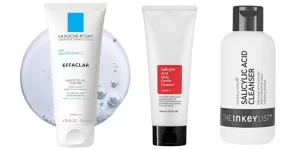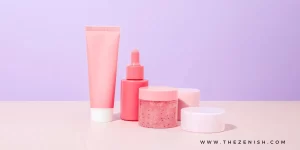
If you’re anything like me, you’re always on the lookout for the latest and greatest products to help achieve that perfect, healthy glow.
Preferably without breaking the bank.
Enter The Ordinary. With their affordable prices and no-frills approach to skincare, The Ordinary has taken the beauty world by storm.
But with so many different products to choose from, it can be a little overwhelming to figure out how to use them all.
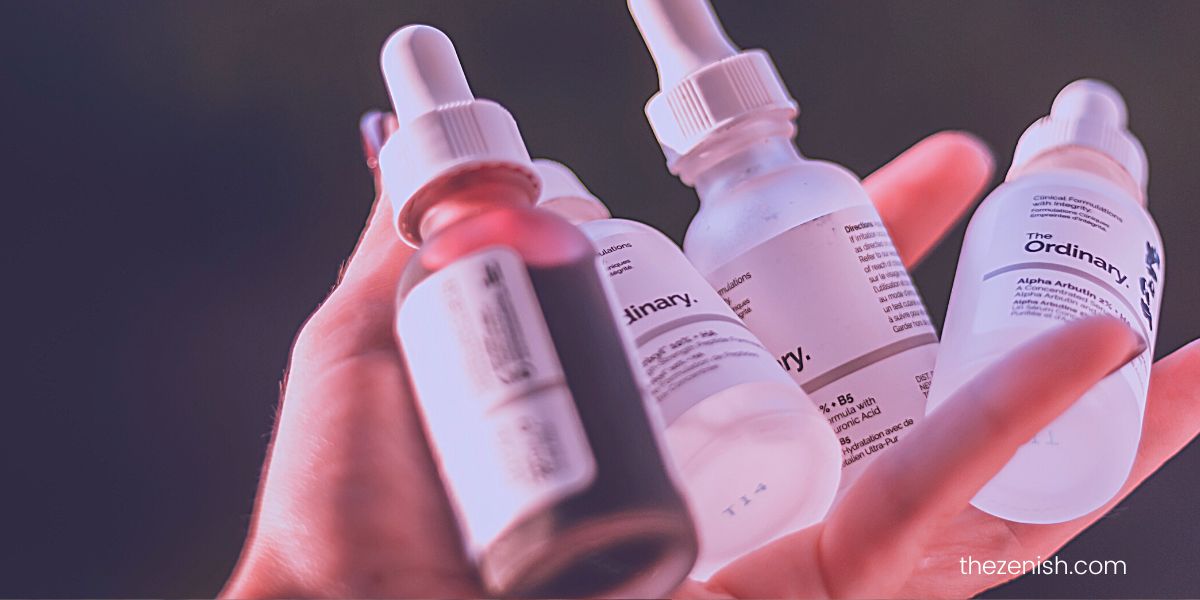
That’s where I come in – today I’ll share how to layer The Ordinary products to get the most out of your skincare routine.
Why it’s important to properly layer your skincare products
Okay, let’s talk about the importance of layering your skincare products.
Sometimes it’s tempting to just slap on your moisturizer and call it a day.
But layering your products can seriously up your skincare game.
Think of it like a sandwich (bear with me here). You wouldn’t just slap some bread and cheese together and call it a sandwich, right?
You’d add some lettuce, maybe some tomato, some mustard or mayo – whatever floats your boat.
But each ingredient adds something different to the sandwich, and the end result is a delicious, well-rounded meal.
Well, the same goes for your skincare routine.
Each product you add brings its own benefits to the table, and layering them in the right order helps them all work together to give you maximum efficacy.
Plus, who doesn’t love a good layering sesh? It’s like a mini spa day, and your skin will thank you for it.
Explaining The Ordinary’s product categories
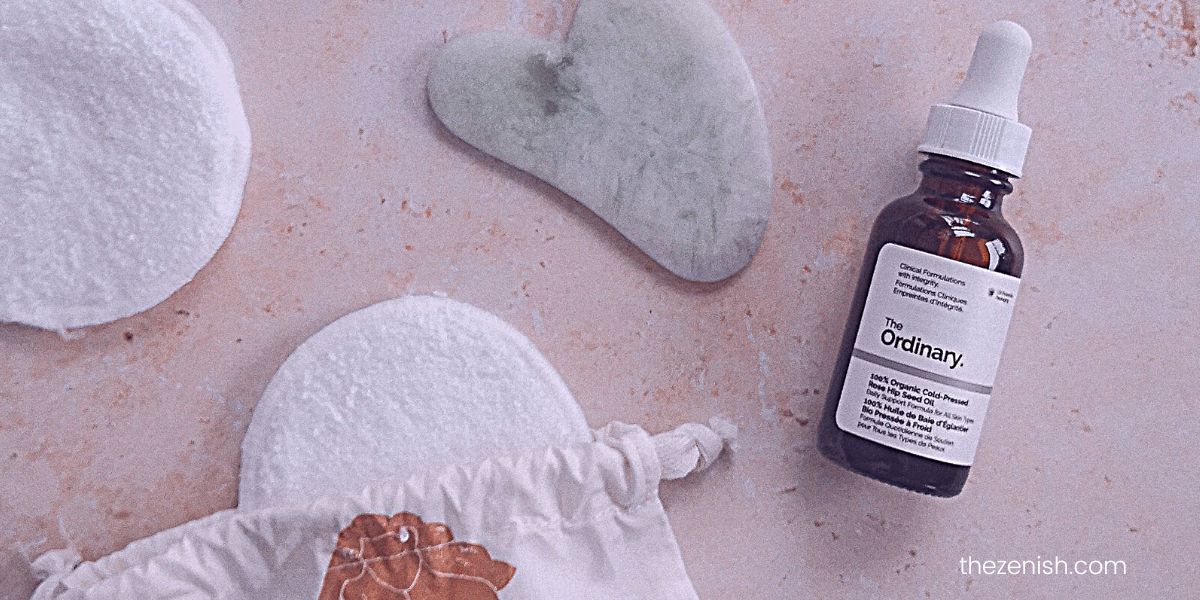
Alrighty, let’s break down The Ordinary’s product categories!
Water-based products
First up, we’ve got water-based products. These are your serums and toners – basically anything with a liquidy consistency.
They’re great for adding hydration and targeting specific skin concerns like acne, dullness, or fine lines.
If you’ve got oily skin, you’ll probably want to stick to water-based products to avoid clogging your pores.
Anhydrous (oil-based) solutions
Next up, we’ve got anhydrous solutions. “Anhydrous” just means “without water,” so these are basically oil-based products.
They’re great for locking in moisture and nourishing dry or sensitive skin.
Pro tip: if you’ve got oily skin, don’t be afraid of using oils!
Just make sure to choose a non-comedogenic one (aka it won’t clog your pores).
See also: Does Rosehip Oil Clog Pores?
Emulsions
Then we’ve got emulsions, which are like a hybrid between water-based and oil-based products.
They’re great for all skin types and can be used to hydrate, protect, and soothe the skin.
Oils
Last but not least, we’ve got oils.
These are your heavy hitters when it comes to moisturizing and nourishing the skin.
They’re great for dry or mature skin, but if you’ve got oily skin or you’re prone to acne/breakouts you’ll want to use them sparingly (or not at all).
See also: Can Acne Prone Skin Use Oils?
Some people find that using any type of oil in their routine causes breakouts, if that’s you, you’ll want to avoid using oils altogether.
Putting it all together
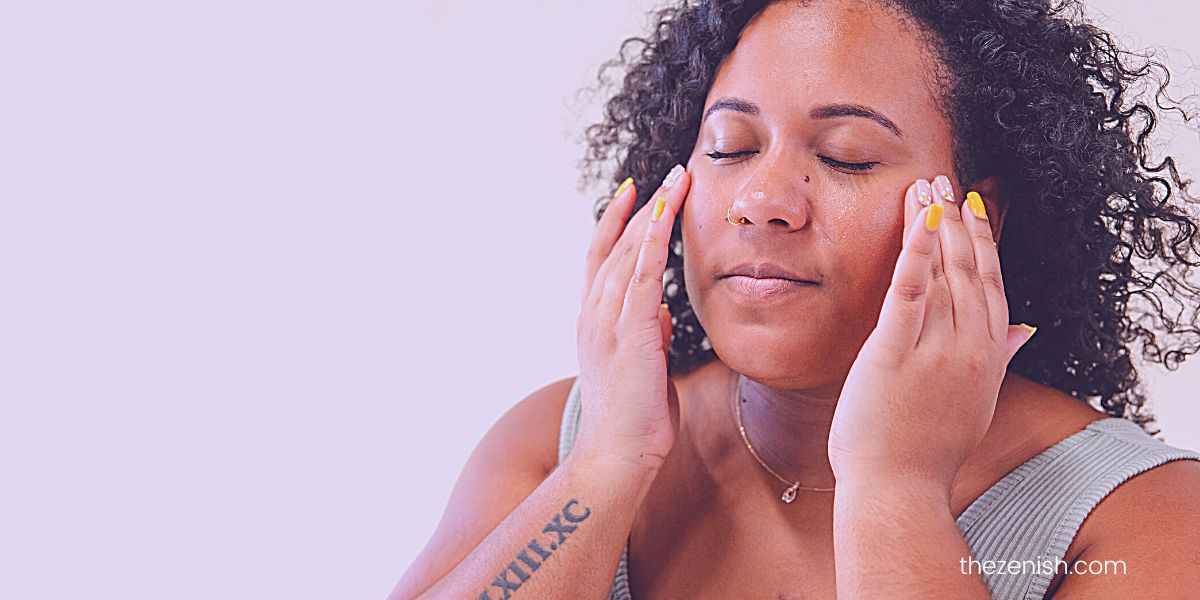
So, how do you know which product category to use for your skin concerns?
As a general rule, water-based products are great for acne-prone or oily skin, while anhydrous (oil-based) products and oils are better for dry or sensitive skin.
Unless you’re prone to breakouts. In this case, you should consider limiting or avoiding oils altogether.
But don’t be afraid to mix and match – it’s all about finding what works best for you and your unique skin concerns!
Creating a layering routine
Alright, let’s get into the nitty-gritty of creating your perfect layering routine!
Step #1 Figure out your skin concerns
The first step is to figure out your skin concerns.
Are you dealing with acne? Fine lines? Dullness?
See also: How To Know If You Have Acne Prone Skin Plus 9 Skincare Tips From Dermatologists
Once you’ve got that figured out, you can start to choose the products that will work best for you.
And again, don’t be afraid to mix and match product categories – remember, it’s all about finding what works for you.
Step #2 Apply your products in the right order
Next, you’ll want to ensure you’re applying your products in the right order.
A good rule of thumb is to start with the thinnest consistency and work up to the thickest.
So, for example, you’d apply your toner or serum first, followed by your emulsion or moisturizer, and then finish off with any oils or heavier creams.
As for when to apply your products, you’ll want to have a morning routine and a nighttime routine.
Sample AM and PM routines
In the morning, you’ll want to focus on protecting your skin from environmental stressors (like pollution and UV rays), so make sure to include a good sunscreen in your routine.
See also: Does sunscreen only last two hours?
At night, you can focus on repairing and nourishing your skin.
AM Routine
Here’s a sample AM routine:
- Cleanse
- Tone *optional (water-based products)
- Serum (water-based products)
- Moisturizer (emulsions)
- Sunscreen
PM Routine
And here’s a sample PM routine:
- Cleanse
- Tone *optional (water-based products)
- Serum (water-based products)
- Moisturizer (emulsions)
- Oil or heavy cream
Remember, these are just examples – feel free to mix and match based on your own skin concerns and preferences.
And remember to listen to your skin and give it what it needs.
Layering The Ordinary products for specific skin concerns
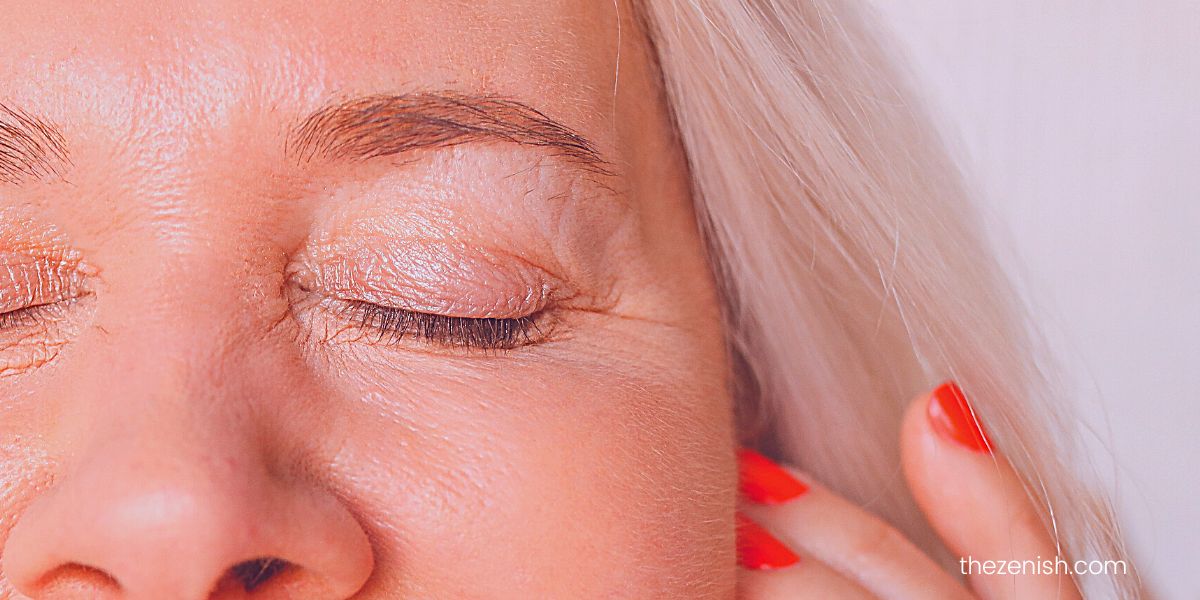
Alright, let’s dive into some specific layering routines for common skin concerns!
These are just examples, and you may need to adjust them based on your needs and preferences.
Feel free to mix and match products and adjust the order of application based on what works best for you!
For acne-prone skin:
- Cleanse
- Tone (water-based products)
- Niacinamide 10% + Zinc 1% (water-based product)
- Salicylic Acid 2% Masque (water-based product)
- Natural Moisturizing Factors + HA (emulsion)
See also: The Ordinary Skincare Routine For Acne (a step by step guide)
For hyperpigmentation:
- Cleanse
- Tone (water-based products)
- Alpha Arbutin 2% + HA (water-based product)
- Ascorbic Acid 8% + Alpha Arbutin 2% (water-based product)
- Natural Moisturizing Factors + HA (emulsion)
See also: Adapalene vs Tretinoin: Which one is better for hyperpigmentation?
For anti-aging:
- Cleanse
- Tone (water-based products)
- Buffet (water-based product)
- Granactive Retinoid 2% Emulsion (emulsion)
- Natural Moisturizing Factors + HA (emulsion)
Remember to always patch test any new products before using them all over your face and introduce them gradually into your routine.
And don’t forget to wear sunscreen during the day, as some of these products can increase your skin’s sensitivity to the sun.
5 ways to avoid pilling and product interference
There’s nothing more frustrating than spending time layering your skincare products, only to have them ball up and pill off your skin.
But turns out there are a few things you can do to prevent pilling and maximize the benefits of each product.
First, let’s talk about what causes pilling.
What causes pilling?
One common cause is using too much product – when you apply too much, it can’t fully absorb into your skin and ends up rolling off in little balls.
Another cause is applying products that don’t play well together – for example, applying a water-based product over an oil-based one.
How to layer The Ordinary products so they don’t pill
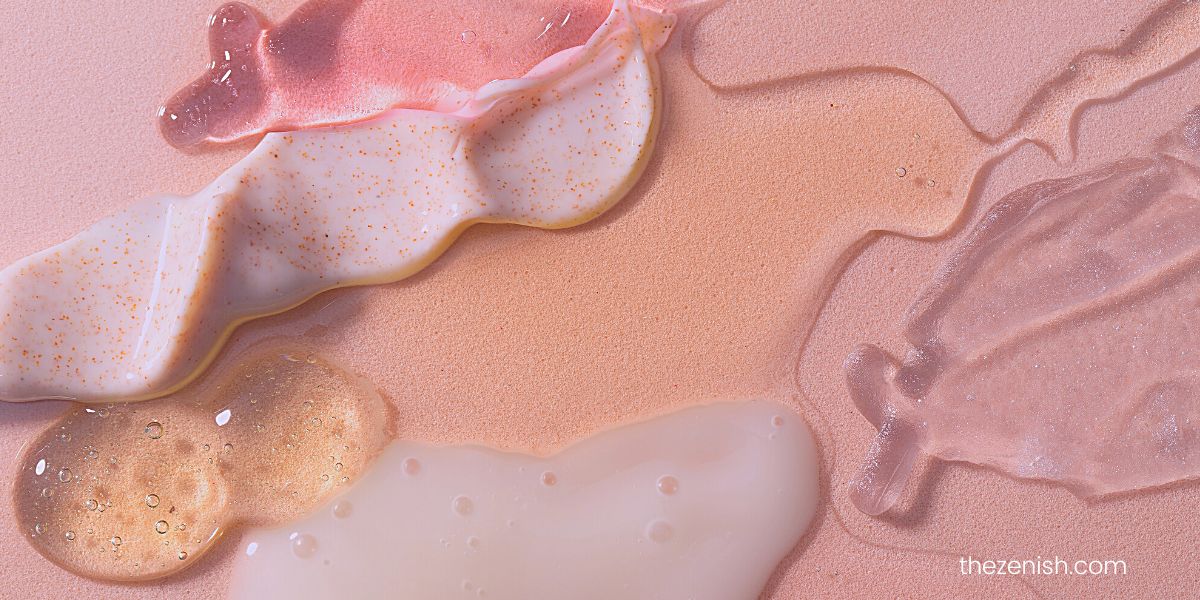
So, how can you prevent pilling? Here are a few tips:
- Use a small amount of each product. A little goes a long way!
- Wait a few minutes between applying each product to give it time to fully absorb into your skin.
- Make sure you’re applying products in the right order – start with the thinnest consistency and work your way up to the thickest.
- If you’re using multiple water-based products, pat each one into your skin until it’s fully absorbed before moving on to the next.
- Consider using a hydrating mist or facial spray between products to help them blend together more smoothly.
Another thing to keep in mind is product interference.
Some ingredients can cancel out the benefits of others, so it’s important to choose products that work well together.
For example, avoid using products with high concentrations of vitamin C and niacinamide together, as they can cancel each other out.
To maximize the benefits of each product, make sure you’re choosing ones that target your specific skin concerns, and that you’re using them consistently over time.
And don’t forget to listen to your skin – if you notice any irritation or sensitivity, it may be time to adjust your routine.
FAQs
Can you use multiple The Ordinary products at once?
Yes! In fact, layering multiple products is a key part of The Ordinary’s philosophy.
The idea is that by using a variety of targeted products, you can address multiple skin concerns at once and achieve your best skin possible.
That being said, there are a few things to keep in mind when layering multiple products.
- First of all, it’s important to choose products that work well together – for example, you wouldn’t want to use two water-based products that have conflicting ingredients.
- It’s also a good idea to start with a small amount of each product and give it time to absorb into your skin before moving on to the next one.
- And, of course, be sure to listen to your skin – if you notice any irritation or sensitivity, it may be time to adjust your routine.
So go ahead, and feel free to experiment with layering multiple The Ordinary products at once.
Who knows – you may just discover your new holy grail skincare routine!
Should you use niacinamide or hyaluronic acid first?
In general, it’s a good idea to apply hyaluronic acid first, followed by niacinamide. Here’s why:
Hyaluronic acid is a humectant, which means it draws moisture from the environment into your skin.
By applying it first, you’re helping to create a hydrated base for your other products to build on.
Niacinamide, on the other hand, is a water-soluble ingredient that can be easily layered on top of other products.
That being said, there’s no hard and fast rule that says you have to use these ingredients in a specific order. If you find that applying niacinamide first works better for your skin, go for it!
The most important thing is to pay attention to how your skin responds and adjust your routine accordingly.
See also: What does niacinamide do for your skin?
Should I use retinol or hyaluronic acid first?
The general consensus among skincare experts is that you should apply hyaluronic acid first, followed by retinol.
This is because hyaluronic acid is a humectant, that helps to draw moisture into the skin.
So when you use it first, you’re creating a hydrated base for your other products to build on.
Retinol, on the other hand, is a powerful active ingredient so layering it over other products can help that can sometimes help soothe any irritation.
And as always, it’s important to pay attention to how your skin reacts to different products and adjust your routine accordingly.
See also: How to use hyaluronic acid in your skincare routine
What next?
Remember to start with a clean canvas, create a personalized routine based on your individual skin concerns, and always patch-test new products before introducing them into your routine.
With a little bit of experimentation and patience, you’ll be well on your way to achieving your best skin yet!

